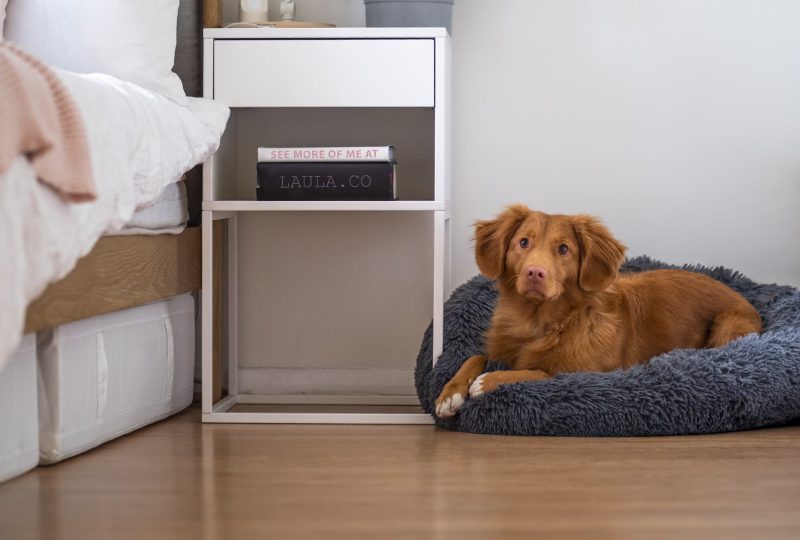Laying laminate flooring can be a great way to refresh the look of your home, but proper installation is crucial for a successful outcome. In this article, we will discuss the top 10 common mistakes when laying laminate flooring, such as not acclimating the flooring, skipping the moisture barrier, and incorrectly cutting the planks.
We will also provide you with tips on how to avoid these mistakes and achieve a successful laminate flooring installation. So, if you want to ensure your floors look great and last for years to come, keep reading for valuable advice.
Why Is Proper Installation Important?
Proper installation of laminate flooring is crucial for ensuring both its aesthetic appeal and longevity, as improper methods can lead to common issues such as buckling, gaps, and moisture damage, which can significantly reduce the durability and overall quality of the flooring.
Common Mistakes When Laying Laminate Flooring
Identifying and understanding common mistakes when laying laminate flooring can help you avoid them and ensure a faultless installation.
1. Not Acclimating the Flooring
One of the most common mistakes is not acclimatising the laminate flooring before installation, which can lead to significant moisture issues and warping.
Acclimatising laminate flooring is a crucial step that ensures the material adjusts to the environmental conditions of the room where it will be installed. This process involves allowing the flooring to sit in its packaging in the installation area for a specified period, typically around 48-72 hours. During this time, the laminate absorbs or releases moisture to reach equilibrium with the room’s temperature and humidity.
By acclimatising the flooring, you reduce the risk of buckling, gaps, and other problems that may occur when moisture levels in the flooring are not aligned with the installation environment. Failure to acclimatise can result in an uneven installation, decreased durability, and ultimately, the need for costly repairs down the line.
2. Skipping the Moisture Barrier
Skipping the damp-proof membrane is a critical mistake during laminate flooring installation, leading to potential damage from subfloor moisture.
Damp-proof membranes play a crucial role in safeguarding laminate flooring against the harmful effects of moisture seeping through concrete subfloors. By creating a protective shield, damp-proof membranes prevent swelling, warping, and mould growth in the flooring material, ensuring its durability and longevity.
There are various types of damp-proof membranes available, including polyethylene sheets, felt paper, and asphalt laminated paper. Each type has its unique characteristics and applications, such as some being more effective in high-moisture environments than others.
Proper installation of a damp-proof membrane involves laying it over the concrete subfloor before placing the laminate flooring. This step is essential to maintain the integrity of the flooring and provide a stable surface for walking on.
3. Not Preparing the Subfloor
Proper preparation of the subfloor is essential to ensure a stable and even surface for laminate flooring installation.
One of the initial steps in preparing the subfloor is thorough cleaning. Any debris, dust, or residues must be removed to prevent unevenness or bumps under the laminate. After cleaning, the subfloor should be checked for levelness. This involves using a levelling compound or shims to correct any uneven areas.
Another crucial aspect is addressing any damages to the subfloor. This can include filling in gaps, repairing cracks, or replacing damaged sections. Failure to fix these issues can lead to squeaks, uneven flooring, or even damage to the laminate over time.
Ensuring that the subfloor is in optimal condition directly impacts the longevity and stability of the laminate flooring. A solid subfloor provides a strong foundation for the flooring, reducing the risk of future issues such as warping or shifting.
4. Incorrect Expansion Gap
Incorrectly calculating the expansion gap is a frequent mistake that can cause the laminate flooring to buckle or develop gaps.
When installing laminate flooring, it is crucial to leave an appropriate expansion gap around the perimeter of the room and other fixed objects. This gap allows the flooring to expand and contract with changes in temperature and humidity, preventing issues such as buckling or gaps between planks.
Typically, a 1/4 to 1/2 inch expansion gap is recommended, depending on the size of the room and the type of flooring being installed. This space provides the necessary flexibility for the material to adjust without causing damage.
5. Not Using Spacers
Forgetting to use spacers during laminate flooring installation can result in uneven gaps and spacing issues.
Spacers play a crucial role in maintaining consistent expansion gaps when installing laminate flooring. These small tools ensure that each plank is evenly spaced from the wall and adjacent planks, allowing the floor to expand and contract with changes in temperature and humidity.
Properly using spacers throughout the installation process is essential. Start by placing spacers along the starting wall, then insert the first row of planks against them. As you continue installing the flooring, remember to keep adding spacers at each end of the planks to maintain uniform gaps.
6. Improperly Installing the First Row
Improperly installing the first row of laminate flooring can lead to alignment issues and an unstable floor structure.
One essential step in installing laminate flooring is correctly laying down the first row. This initial row sets the foundation for the entire floor, so ensuring it is straight and well-spaced is crucial. To achieve a precise starting point, consider using guides or chalk lines. These tools help maintain straight alignment and proper spacing, preventing future issues with the flooring’s stability. By taking the time to set up the first row accurately, you can create a seamless and durable laminate floor that enhances the overall look of your space.
7. Not Staggering the Planks
Failing to stagger the planks is a common mistake that affects both the stability and aesthetics of the laminate flooring.
Staggering the planks is crucial as it helps distribute weight and stress evenly across the floor, reducing the risk of shifting or buckling over time. This method also adds a touch of visual appeal by creating a more natural and authentic look.
To achieve this, it is recommended to start the second row with a plank cut to at least 12 inches in length. Alternating the end joints of adjacent rows by 6-12 inches is a common practice, ensuring structural strength and a seamless appearance.
8. Incorrectly Cutting the Planks
Incorrectly cutting the planks can result in uneven edges and poor fitting, leading to visible gaps and installation issues.
It is crucial to use the right tools and techniques for cutting laminate planks to achieve a seamless finish. Accuracy is key when measuring and cutting the planks to ensure they fit perfectly without any imperfections.
One tip is to measure twice and cut once, as the saying goes. Taking time to double-check measurements can save you from potential mistakes and waste.
Using a proper saw with the right blade for laminate flooring can make a significant difference in the outcome. Making precise cuts along the marked lines can prevent any gaps or misalignment during installation.
9. Not Properly Installing Underlayment
Failing to properly install the underlayment can compromise the overall quality and performance of the laminate flooring.
Underlay plays a crucial role in ensuring the longevity of your laminate flooring. It provides crucial support by creating a smooth and level surface for the flooring to adhere to, preventing any damage from subfloor imperfections.
Additionally, sound reduction is another key function of underlay. The material helps absorb impact noise, minimising the sound of footsteps and other everyday activities, creating a quieter and more comfortable living environment.
Proper installation of underlay involves precise steps, such as ensuring seams are tightly sealed to prevent moisture from seeping through. Incorrect installation could lead to the formation of mould and mildew, damaging both the flooring and subfloor.
10. Not Cleaning Up Glue or Adhesive
Neglecting to clean up glue or adhesive during installation can result in unsightly finishes and damage to the laminate flooring surface.
Properly addressing these spills is crucial to maintaining a sleek and polished appearance in your living space. Residual glue not only degrades the aesthetics, but it can also compromise the integrity of the flooring material over time.
Effective cleaning methods are essential to avoid lasting consequences. When addressing adhesive spills, opt for mild detergents or specially formulated adhesive removers to prevent any potential damage to your laminate flooring.
How to Fix Laminate Flooring Mistakes
Most of the time the common mistake when laying laminate flooring is starting in preparation and sometimes you need to start from the beginning. Here is how to fix laminate flooring mistakes on the above!
1. Laminate Acclimatisation
Laminate flooring needs to adapt to new temperatures and you need to adjust their moisture level and lay laminate flooring boards on the floor at room temperature for 48 to 72 hours.
2. Underlayer and Moist Barrier
If you are already laying your laminate flooring, you need to go back from the start and prepare for the underlayer. It may sound very annoying, but this is the only way you can fix it.
You can choose various underlayers such as foam, plywood, rubber, etc. Use the one that is suitable for your room and budget.
3. Expansion Gaps and Joins
How to fix laminate flooring mistakes in expansion gaps and joins is using spacers. If you do not have spacers, leave ⅜ inch of the edges next to the wall.
4. Manufacturer’s Guidelines
Different brands, different ways. Some laminate flooring brands have different patterns, directions, and pieces to be drafted. So, make sure you read the manufacturer’s guidelines
5. Finishing with the Wrong Products
Use a dry mop, brush or fabric. If you mop with a wet mop, dry the floor immediately and keep it away from other sources of moisture.
How to Avoid These Mistakes
To avoid common mistakes when laying laminate flooring, it is essential to follow best practices and adhere to detailed installation guidelines.
Tips for Successful Laminate Flooring Installation
Successful laminate flooring installation requires attention to detail, the right tools, and a focus on finishing touches to ensure a high-quality result.
One of the most crucial aspects of a successful installation is selecting the appropriate tools. Make sure you have a quality saw, spacers, tapping block, and pull bar to ease the process.
Before starting the installation, carefully read the manufacturer’s instructions and prepare the subfloor by ensuring it is clean, level, and dry. This vital step can significantly impact the durability and appearance of your laminate flooring.
During the installation process, be patient and meticulous. Pay attention to the seams between planks, ensuring they fit snugly together. Use a rubber mallet to gently tap the planks into place without damaging them.
See product: Quick-Step Largo Natural Varnished Merbau
Conclusion
A properly installed laminate flooring can provide a durable and aesthetically pleasing finish that withstands daily wear and tear.
In terms of installing laminate flooring, attention to detail is crucial. Proper installation techniques ensure a seamless finish and prevent issues like gaps or buckling over time. The meticulous alignment and secure locking mechanisms not only enhance the visual appeal but also increase the floor’s longevity.
By investing in high-quality installation, homeowners can enjoy the benefits of a low-maintenance flooring option that is resistant to scratches, moisture, and fading. A well-installed laminate floor adds value to the property and contributes to a comfortable living environment.
That’s all about common mistakes when laying laminate flooring. Enhance your space with our quality laminate flooring, and enjoy peace of mind with our expert installation team. Explore TEKA Flooring collections and inquire about our exclusive installation offers.
Read also:

































